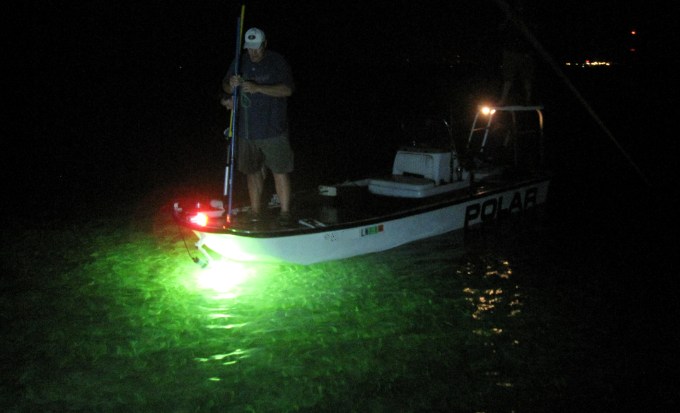 |
| |
FISHNLIGHT.com's BL200 and DC100 Underwater Fishing Lights Review |
| |
For this year's lobster mini season, three new products we brought along were the FISHNLIGHT.com
DC100 and BL200 underwater fishing lights and the Remora screw-less SeaSucker vacuum mount.
From the moment these lights arrived in the mail, we couldn't believe the attention to detail
this company put into them. There are a lot of little things that the FISHNLIGHT has that
tells you they put a lot of thought and effort into delivering a high quality product.
The lights arrived in a nicely packed box and came with a nice custom carrying bag and towel.
We ordered 3 different color lenses, green, clear, and blue. The lenses were high quality
and custom made. They even went so far as to have the company's name etched on them.
Typically with a product like this, companies use off-the-shelf parts they retrofit to
work for their application. It appears these lights were designed and manufactured from
the ground up. The only off-the-shelf part that I observed was the light bulb which is
very convenient. The light bulbs for the BL100 and BL200 can be picked up at your local
Home Depot or Lowe's.
Another great feature of the underwater lights is the ability to extend the standard 25ft
cord to as much as 300 ft. This would be very helpful for fishing or diving in deep water.
We didn't try it past about 10 ft of water, but considering how well it is constructed, I
feel confident that it would still be working after sending it down 300 ft.
On our first night in the Keys, we dropped the BL200 light into the water off the edge
of our dock. Within seconds, small minnows started to swarm above the light. Within a
few minutes, menhaden started doing laps around the light. It was quite amusing to watch
the fish as they did lap after lap around the light. After a few hours we checked back
and the minnows and menhaden were still doing their thing. At this point, we started to
see shadows of larger fish moving in on the extremes of where the light reached.
On the flats, we tested both the BL200 and DC100 in depths of 6in to 6ft. The light did
a great job at depths ranging from about 2ft to 6ft. Once we got to depths of less then
2ft, the light didn't illuminate as far out as when the water was deeper. We tested both
the green and clear lens for bully netting and got mixed reviews. Most of the guys
preferred the white light, but a few liked the green better. I suggest experimenting
with the colors to see which work better for your eyes. For the best results, we found
that if we mounted the light underneath an edge of the boat we got a lot less glare coming
back up out of the water.
One great application we found for the light was on a flats boat that did not have the
availability to mount above water lighting since it has no rails. The first night, we
mounted an above water outdoor flood light to the push pole which was extended out horizontally
in front of the boat. This only gave the light a couple inches of clearance above the water,
and within a few hours the light stopped working because it got splashed too many times. It
was also inconvenient because it is often necessary to use the push pole in shallower waters.
The second night, we used the Remora screw-less SeaSucker vaccum mount with the BL200 and
attached it to the front of the boat. It worked great! Since it does not require screws,
we were able to mount the light under the front lip of the boat and just barely submerge
the light into the water, so we could still get into the shallower areas.
All in all, we think the FISHNLIGHT makes a great addition for numerous marine activities.
If you don't have the ability to mount above water lighting for bully netting, this light
works well. Also, it seemed to do a great job attracting both bait fish and larger
predators, and although we didn't test it for night diving, it appears to be helpful for that as well.
|
|
|
|